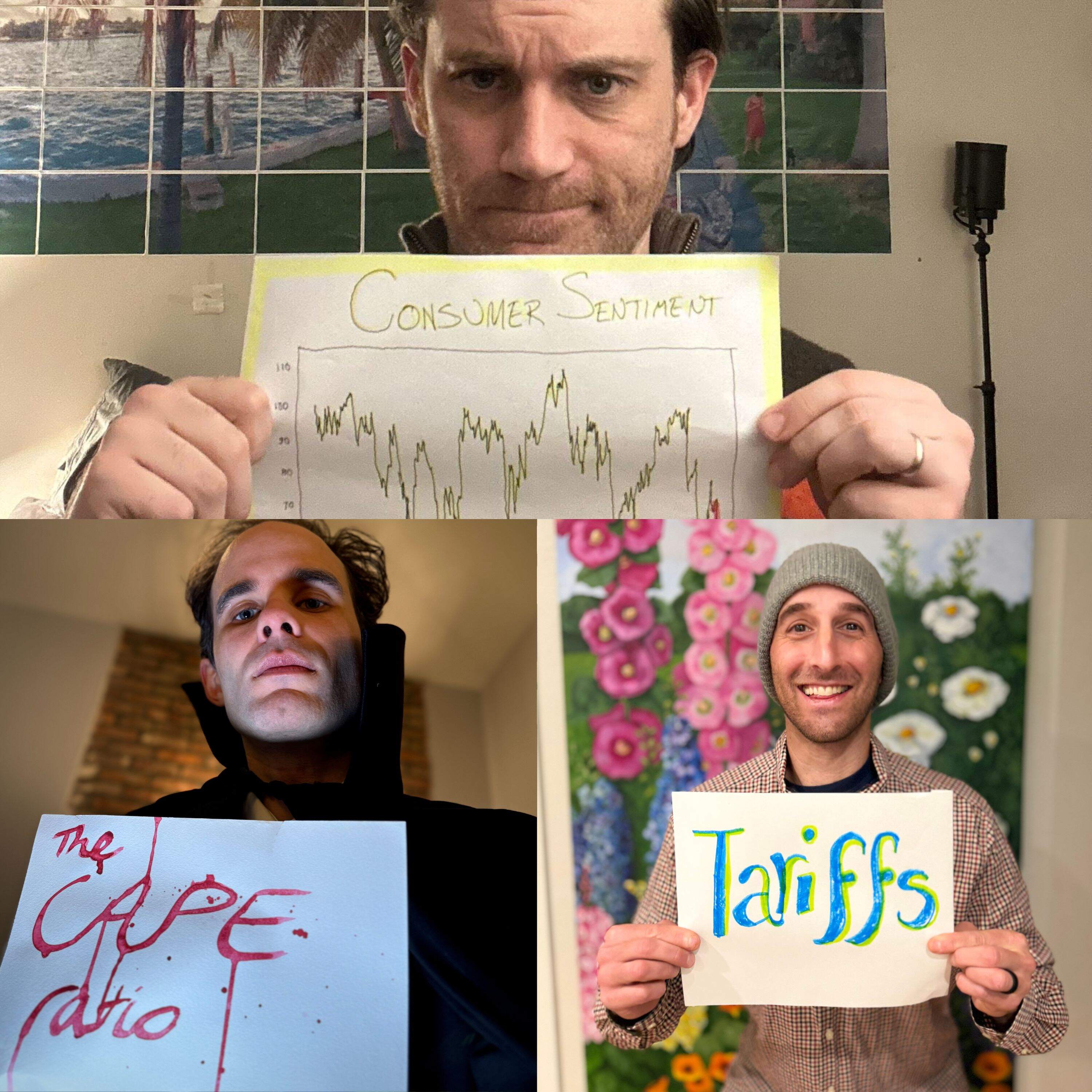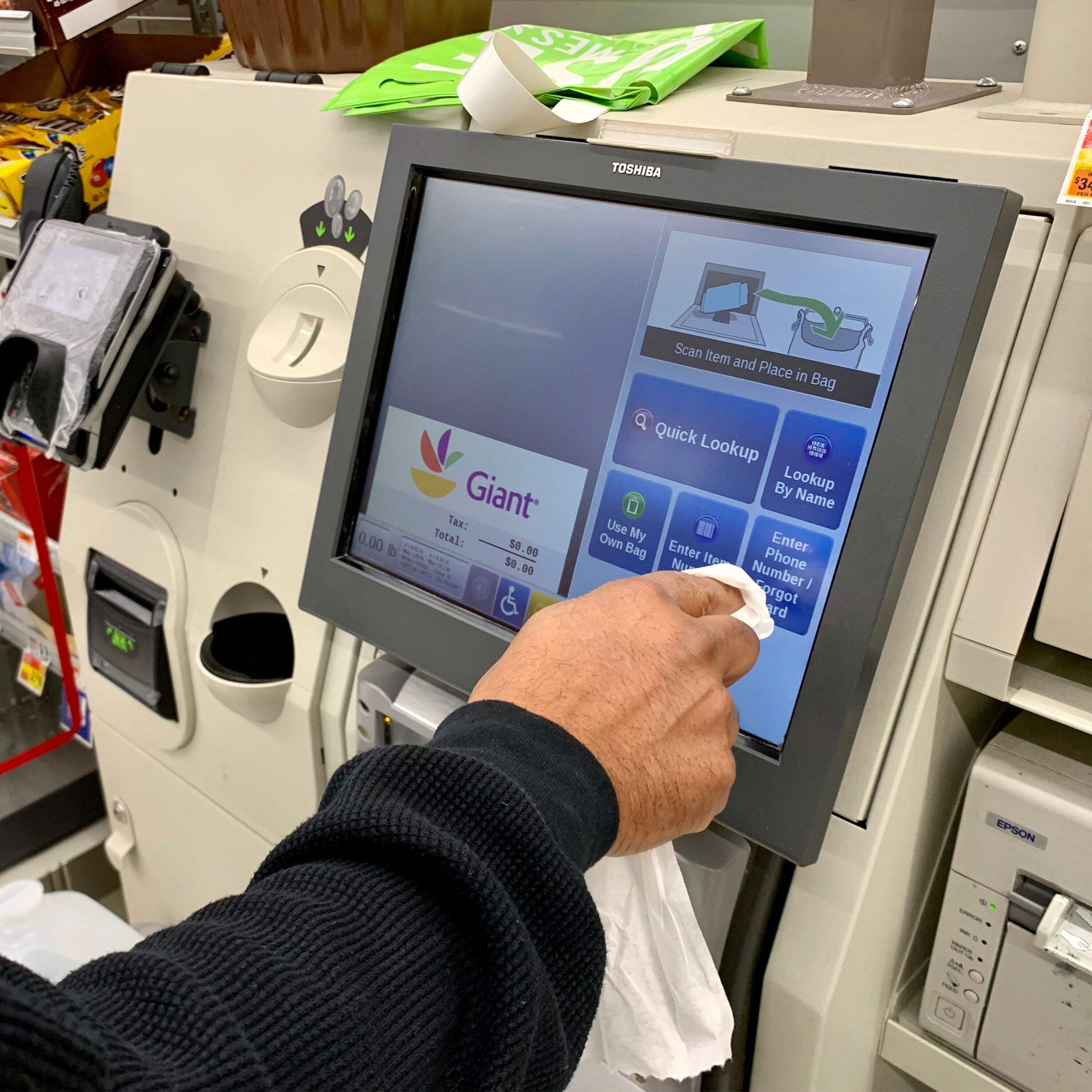More for Palantir, less for mRNA, and a disaster database redemption arc
On today's episode: Palantir crosses a billion dollars in quarterly revenue (what do they actually do again?); mRNA vaccine research gets a big cut in RFK Jr's health department; and a climate disaster database gets a new lease on life.
Related episodes:
How Palantir, the secretive tech company, is rising in the Trump era
An indicator lost: big disaster costs
Moonshot in the arm
For sponsor-free episodes of The Indicator from Planet Money, subscribe to Planet Money+ via Apple Podcasts or at plus.npr.org.
Fact-checking by Sierra Juarez and Cooper Katz McKim. Music by Drop Electric. Find us: TikTok, Instagram, Facebook, Newsletter.
Learn more about sponsor message choices: podcastchoices.com/adchoices
NPR Privacy Policy
Press play and read along
Transcript
Speaker 1 NPR.
Speaker 2 This is the indicator from Planet Money. I'm Waylon Wong here with Darian Woods.
Speaker 1 Hello. Hello.
Speaker 2 And darkening, nay, brightening the indicator's doorstep is the astonishing Amanda Ronchik.
Speaker 3 I was like, darkening, I only bring lightness and joy.
Speaker 1 It's true.
Speaker 4 Amanda, you have delighted us at quite an opportune moment because right now on this day at this very second is
Speaker 1 indicators of the
Speaker 1 week!
Speaker 3 What? I had no idea that that's why I was here.
Speaker 1 A surprise.
Speaker 2 Well, I hope you brought an indicator because on today's episode we have...
Speaker 4 Palantir sales soar.
Speaker 3 The health department cuts more.
Speaker 2 And for a billion-dollar database, a new home is in store.
Speaker 4 That's all after the break.
Speaker 3 Darian, it is indicators of the week. What is your indicator?
Speaker 4
My indicator is $1 billion. That's how much sales the data company Palantir made over the last quarter.
It's quite a big increase.
Speaker 3 That's a lot of money. I didn't make a billion dollars this week.
Speaker 4 So a lot of this growth comes from Palantir's growing contracts with the Trump administration. And to understand what it's doing there, I'll explain what Palantir does as a company.
Speaker 3 That would be helpful because I feel like I kind of know, but I don't really know.
Speaker 4 So Palantir was co-founded by Peter Thiel of PayPal Fame a couple of years after 9-11.
Speaker 4 And the idea was they could take similar anti-fraud software that PayPal used and apply this to combating terrorism.
Speaker 4 And so now Palantir has a few lines of work, like helping private companies with AI.
Speaker 4 But a lot of it revolves around integrating data sets from around government departments, mostly for intelligence and the military. A big one for the company is software called Palantir Gotham.
Speaker 2 These names get darker and darker. Why couldn't they have called it Palantir Pleasantville? Palantir Whoville?
Speaker 4 It's a mix of Lord of the Rings and Batman.
Speaker 4
You know what kind of literature these people are reading. And it tracks people and predicts where they might go.
It's not only used by intelligence agencies, but also police forces.
Speaker 4 And as for what that means, I'll let CEO Alex Karp speak for himself. Here's what he said in an earnings call earlier this year.
Speaker 5 Palantir is here to disrupt and make the institutions we partner with the very best in the world, and when it's necessary, to scare enemies and on occasion kill them.
Speaker 3 Like actually kill them? What are we talking about here?
Speaker 4 Oh, well, a lot of it's used for the Defense Department. So
Speaker 1 that is
Speaker 4 end uses a lot of the time.
Speaker 4 And about the business that's grown under the Trump administration, one controversial project is a $30 million contract to build a database that cysts through immigration and criminal records to target, monitor in near real time and help deport people the government wants to remove.
Speaker 3 Yes, I have seen NPR reporter Bobby Allen has reported on this a bunch. If you want to hear more, you can go to his reporting too.
Speaker 4 Yeah, and contracts like these have contributed to Palantir's growing valuation. It's now valued in the stock market at at about $420 billion,
Speaker 4
which is among the very top echelon of companies in the U.S. It's more than Johnson ⁇ Johnson.
It's more than Home Depot. It's more than Bank of America.
Speaker 4 So its earning growth has been impressive, but a lot of analysts are warning that only a billion dollars in quarterly revenue isn't enough to justify a massive $420 billion valuation.
Speaker 2 I mean, I'll say that's a huge gulf between revenue and this valuation. Speaking of a huge gulf of money, Amanda, what's what's your indicator?
Speaker 3 That segues nicely into my indicator of the week, which is going to be a cut of $500 million.
Speaker 3 That is what the health department just cut from 22 projects that focus on mRNA vaccines.
Speaker 2 mRNA vaccines, you are really taking me back to 2020, Amanda.
Speaker 3
Yes, I'm going to give you a little flashback. I promise to make it very quick.
I don't want to trigger anybody. April 2020, COVID-19 is spreading around the world.
Speaker 3 People are like, ah, if only we had a vaccine.
Speaker 4 I definitely remember feeling that way.
Speaker 3
I think we all felt that way. And at that point in time, mRNA science was a few decades old.
COVID-19 hits. It's time to give this new technology a proper run.
And then...
Speaker 3 Like, oh my goodness, there are some vaccines that are made unbelievably fast, faster than ever before. In just months, a vaccine is created and it's tested and it starts being produced.
Speaker 3 If you still have a vaccine card tucked in a drawer somewhere and you have the Pfizer
Speaker 3 or the Moderna vaccine, that is an mRNA vaccine.
Speaker 2 Oh, I do have my card. Remember when you'd be like, which one did you get?
Speaker 3
Yes, I know. It was a little competitive.
So
Speaker 3 those were the mRNA vaccines.
Speaker 3 They came out at different times. And like, this all happened under the first Trump administration.
Speaker 3 It was part of what was called Operation Warp Speed, which was this public-private partnership with big pharmaceutical companies.
Speaker 4 And ultimately, those vaccines saved millions of lives. Two of the researchers won the Nobel Prize in 2023.
Speaker 3
Right. So this was a very big deal.
Flashback, over. Now, generally, big pharmaceutical companies do not want to make vaccines for diseases that only might go full pandemic or full outbreak.
Speaker 3 And this is why historically vaccine development is slow and insufficient when it's just like left up to the free market.
Speaker 3 And that's why the government was still investing $500 million in research to develop new vaccines for things like another COVID, a flu, maybe a bird flu.
Speaker 2
So does this mean that Robert F. Kennedy Jr.
isn't investing health department money in vaccine development anymore?
Speaker 3 No, he still says he is. In this case, he just says he's cutting the funding for mRNA vaccines.
Speaker 3 He says that the mRNA vaccines fail to protect effectively against upper respiratory infections like COVID and flu.
Speaker 3
And sure, these vaccines are not perfect. People do still get sick.
But the idea that they fail to protect effectively is simply not true. I hope that wasn't too much of a bummer for everybody.
Speaker 3 Whelan, what is your indicator?
Speaker 2 Well, my indicator is going to sound a lot like Darian's indicator. It's $1 billion.
Speaker 1 I'm not going to talk about palette.
Speaker 4 That's not often that that happens.
Speaker 2 I know, right?
Speaker 2
But my billion dollars refers to the billion-dollar weather and climate disasters database. This is a database of extreme weather events in the U.S.
that hit at least $1 billion in costs or damages.
Speaker 2 And it was part of NOAA, that's the National Oceanic and Atmospheric Administration. Indicator listeners might remember we did an episode on this database back in June.
Speaker 4 Interesting. So it's a database of disasters that cost as much as one quarter of Palantir revenue.
Speaker 1 Yeah, everyone.
Speaker 2 Someone should like make a little graph.
Speaker 3 Yeah, or twice as much as there was in funding for mRNA vaccines.
Speaker 1 Yeah, exactly.
Speaker 4 So this is because the federal government retired the database. You can still see old data on the NOAA website, but it hasn't been updated past 2024.
Speaker 2
Right. And at the time, we spoke with the database's architect, Adam Smith.
He is a climatologist, and he had taken the government buyout.
Speaker 6 It's just hard and strange, and I still, it still feels
Speaker 6 bizarre, frankly.
Speaker 2 But guess what? I am here with an update on this billion-dollar database. It's being brought out of retirement by a nonprofit called Climate Central, and they have hired Adam Smith.
Speaker 2 Climate Central told us they are excited that he's now on board and that he'll be bringing back the database.
Speaker 4 I remember that Adam told us he was hoping to keep the work going with a nonprofit or a private company.
Speaker 2 Yeah, this is what he said at the time.
Speaker 6 It's a pretty complicated landscape to redevelop something like this. It's certainly not straightforward, but that's where we are right now with it.
Speaker 3 It sounds like it is not that simple. You can't just copy and paste the data from one website to another, although I don't know, maybe you could.
Speaker 3 Like, what does he actually have to do to put the database back together?
Speaker 2 Yeah, so Adam's team at NOAA had pulled in data from over a dozen public and private sources. So you had like the U.S.
Speaker 2 Department of Agriculture and insurance companies, and that's because they were tallying up damages from natural disasters.
Speaker 2
And so they went around, you know, tabulating the value of homes and vehicles and forests and electricity grids. Like it really runs the gamut.
So they had to pull the numbers from a lot of places.
Speaker 3 Well, that is super interesting that this like kind of orphaned government data has now found a new home. Thanks for the update, Whaylen.
Speaker 3 Do I get to say that? Thanks for the the update, Whaylen. I feel like I just like live here in the indicator all the time and I can just
Speaker 3 thank you. Thanks for being on my show, guys.
Speaker 1 It's great.
Speaker 3 It's wonderful to have you here both.
Speaker 4
This episode was produced by Angel Crereas with Engineering by Kway C. Lee.
It was fact-checked by Sierra Juarez and Kuta Katz McKim.
Speaker 4 Kate Kincanon edits the show and the indicator is a production of MPR.





